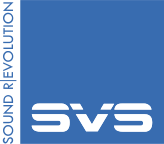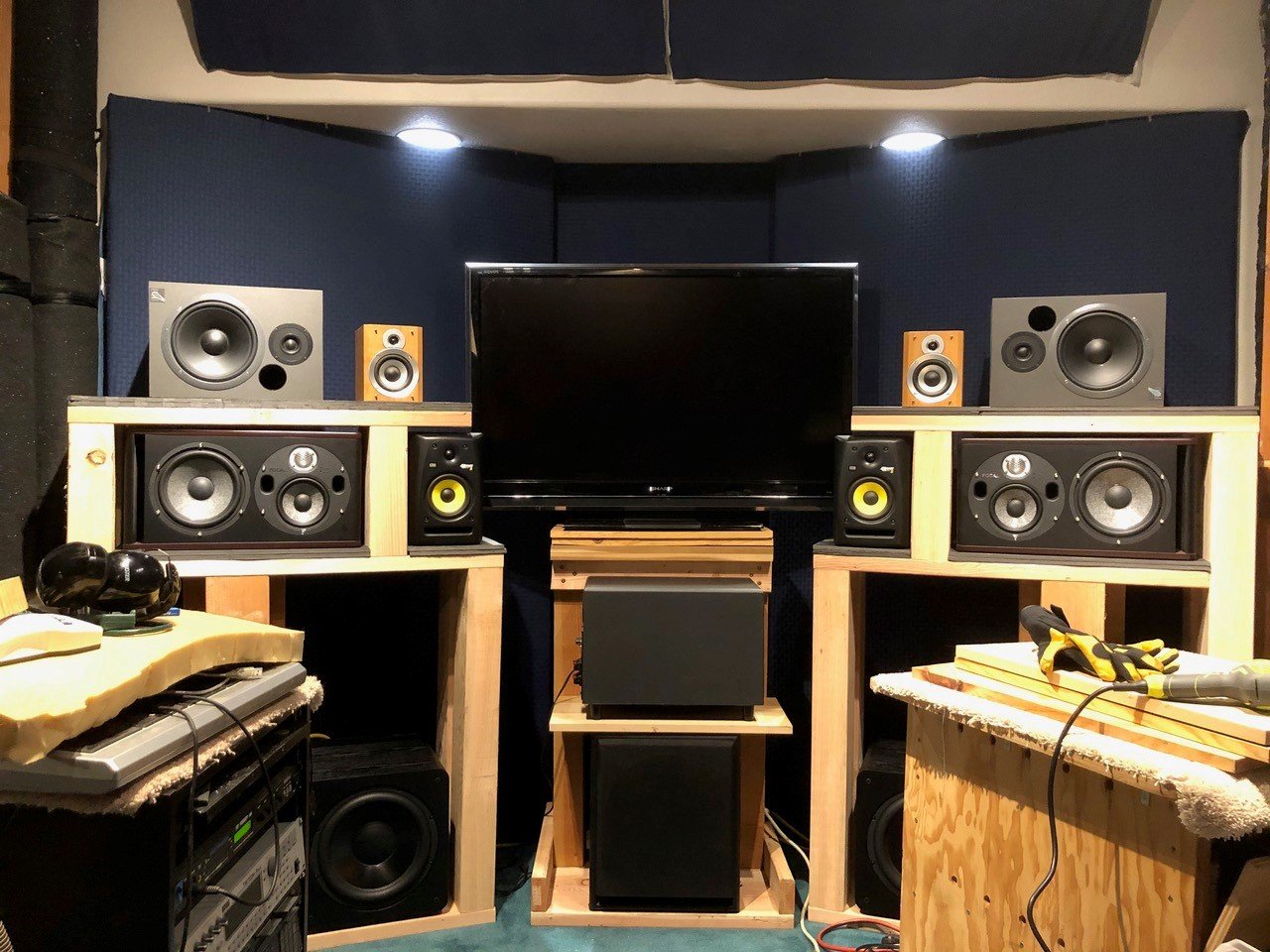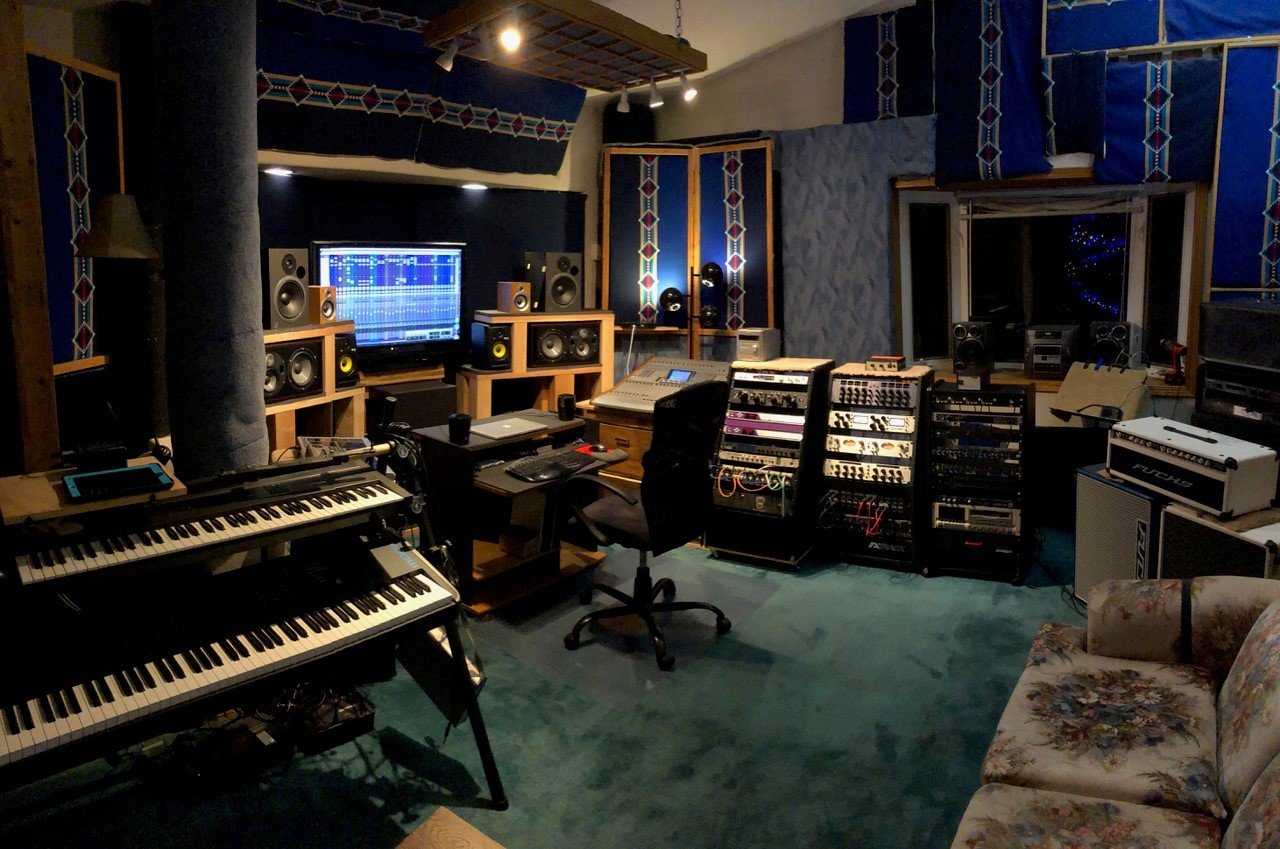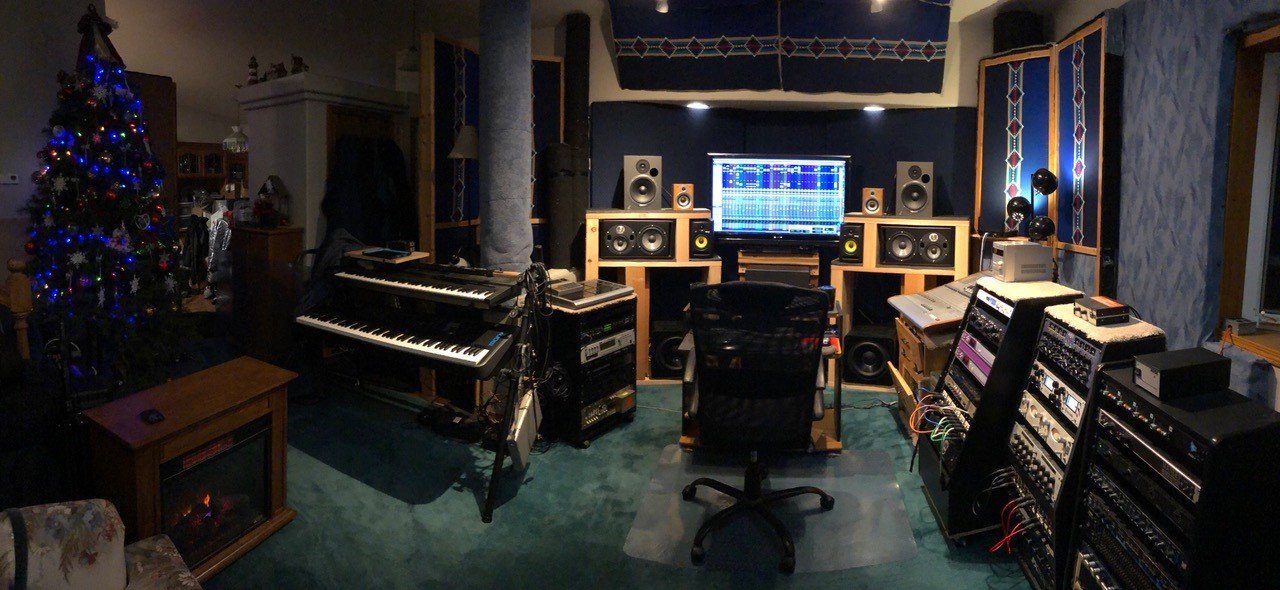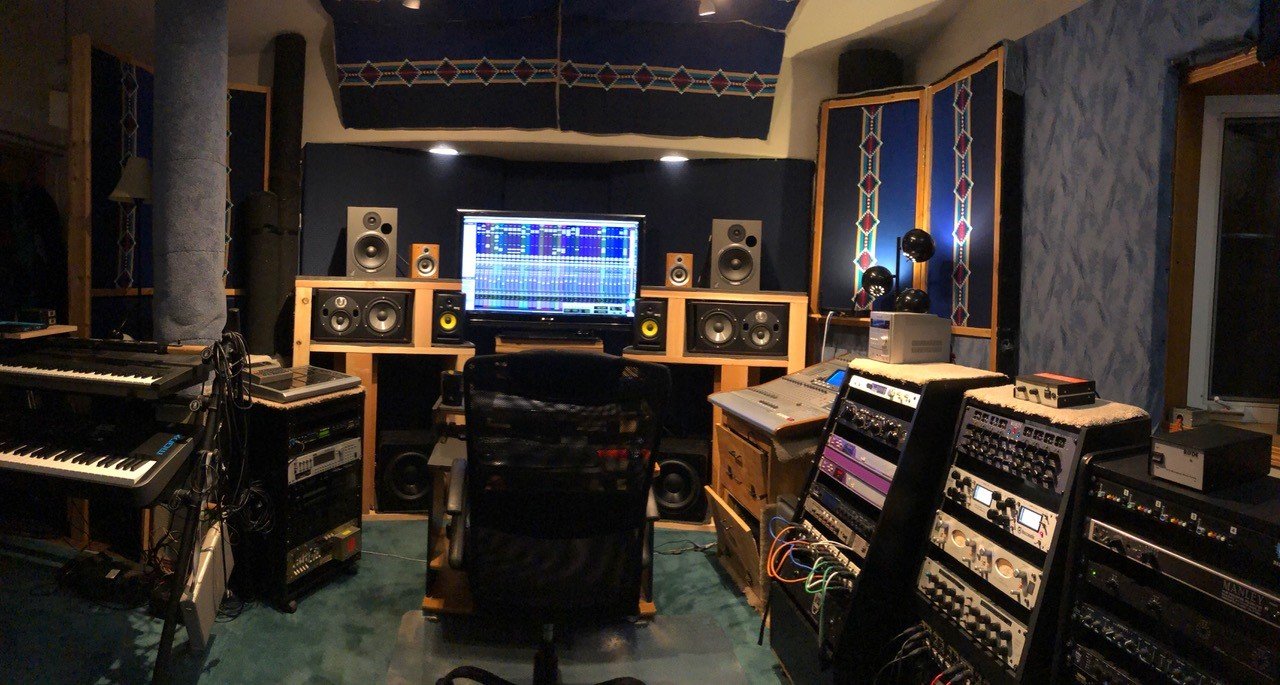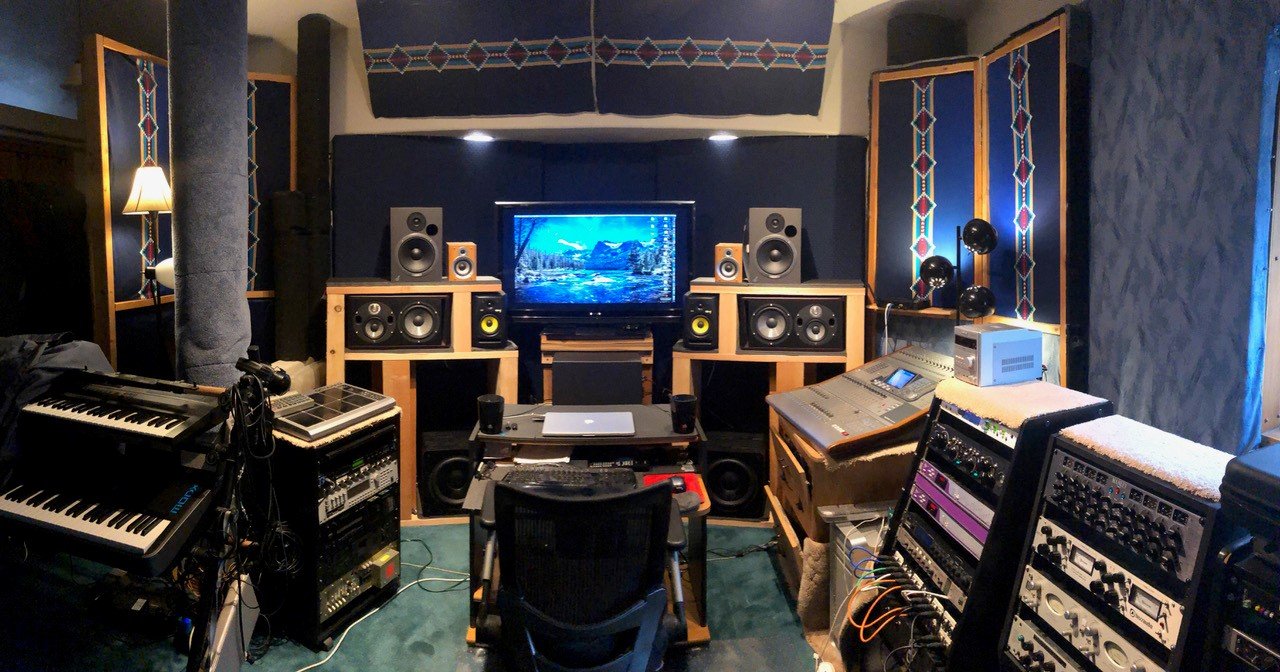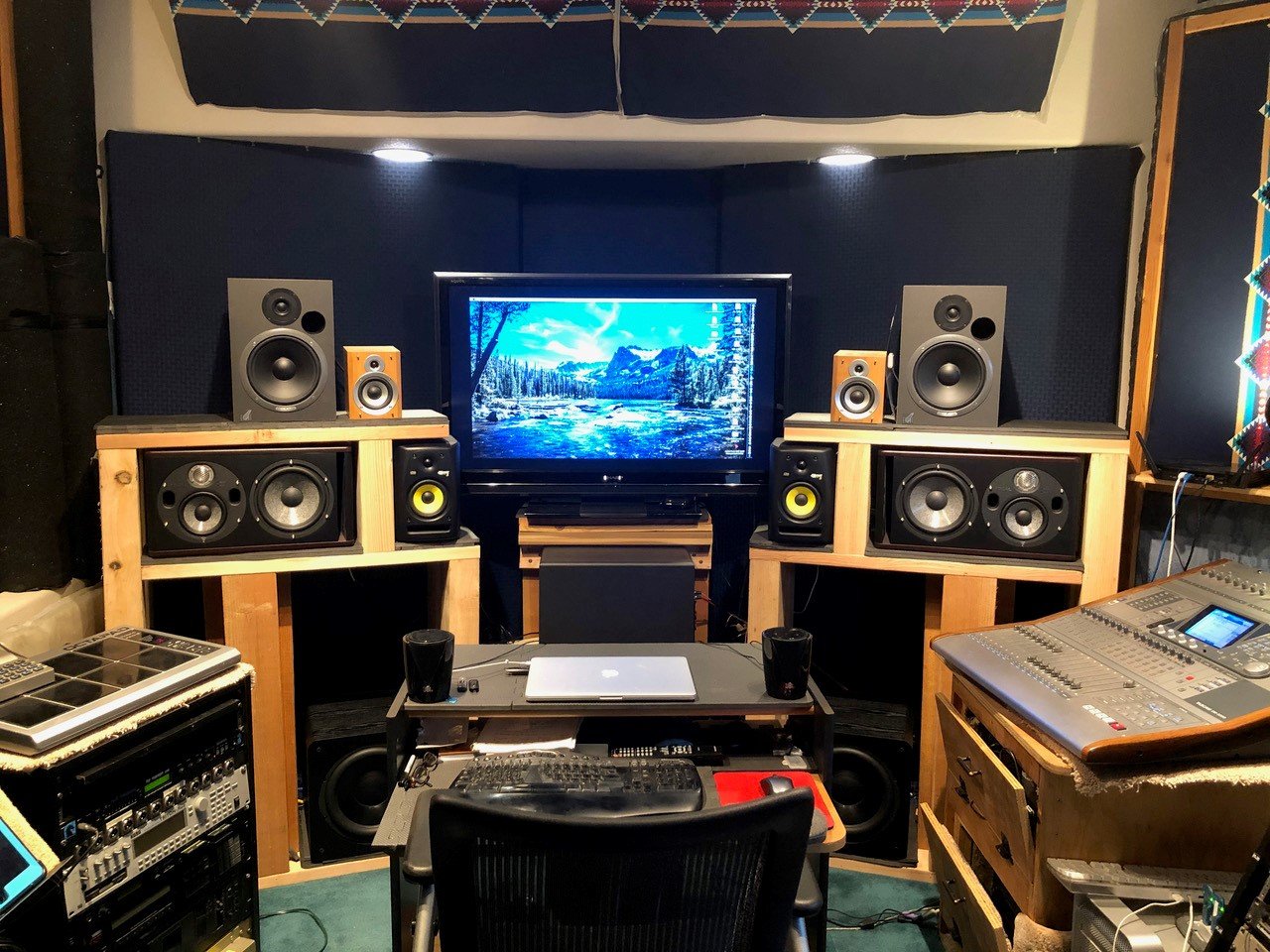SVS Featured Producer: Michael Lewis, The Song Mill Studios
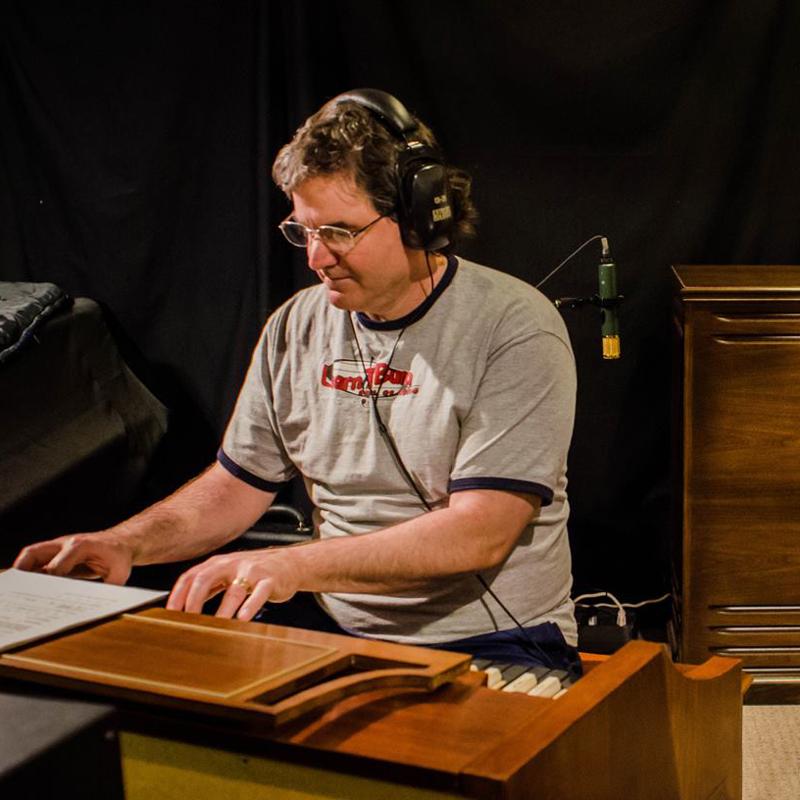
Michael Lewis, Musician & Sound Engineer
It used to be that making music involved getting musicians together in a room, recording multiple tracks, and layering them together in a balanced and cohesive way. Now, as the world has become more virtual, the process is evolving. In this interview, Michael Lewis, owner of The Song Mill Studios, discusses how creating music has changed, the importance of bass in the soundstage, and why his dual SB-2000 Pro subwoofers have become an indispensable part of his monitoring system.
Questions And Answers:
Has audio and music always been a passion of yours?
My mom was a real music buff. She either had the radio on or records playing all the time when I was growing up and she had she had great taste in music. There was Burt Bacharach, Blood, Sweat and Tears, Neil Diamond, Barbara Streisand, Frank Sinatra, all the great classics of the time, she was into all that stuff, and that was her record collection. I was spinning vinyl from an early age and then, of course the radio was still popular then. It just always seemed like we had music playing.
Later, as I got into my own music, I became a prog rock fan early on, then I got into jazz and studied jazz in high school and went on to study jazz in college. The music professor that I studied under became the director of jazz studies at UC Berkeley in California so he was a big inspiration too.
Tell us a bit about how you got into the audio industry.
I opened my first studio in 1985 so I've been a studio guy for 35 years. My passion for studio engineering started when I was a teenager since I was a musician from a very young age. I got my first guitar when I was five and strummed it until my fingers bled and then start getting lessons when I was 11. I was very interested in recording, so I started doing cassette recordings. I got a cheap setup and did my own multi tracking at a church where I was a member of the folk group. I had access to additional instruments, and they had another cassette deck. So, I would take my cassette deck down there and get their deck out, and I overdubbed percussion, bass, church organ, and guitar, bouncing tracks back and forth. I learned about the acoustic wonders of the accumulation of noise that happened with cassette to cassette recordings! It made it sound like there was a waterfall next to where I was recording. Years later, in 1985, I had an offer to open a studio with the help of a friend of mine in Southern Oregon and with my background, we were able to start producing albums from day one and it’s been a great ride since then. Over the years I’ve also been fortunate to be paired with some talented engineers who helped lay my foundation and they are the ones who taught me most of what I know. They taught me a lot as well.
What is the difference between mixing and mastering?
Well, mixing is the process of assembling a collection of multiple recorded tracks and bringing them to a cohesive place. You may start out with 24, 48 or more tracks and blend them together onto a nice sounding stereo mix that is bounced down to two tracks. Mastering is the process of taking that stereo mix, performing final EQ and enhancements and setting the appropriate levels for CD, digital delivery or even vinyl. Nowadays, we have a wide variety of different levels required for YouTube, Spotify, iTunes, CDs etc. There are different standards for each medium out there. But the mastering process balances levels and assures that the final sound is of a commercial quality. This includes final compression/limiting and EQ adjustments including finalizing the bass to give it more or less size, depth and impact, adjusting the highs to make them brighter or darker etc… there are also ways that we can adjust relative phase, mid-side processing and more.
We want a nice balanced sound and as I said, an appropriate, industry standard level, because a big part of the job of the mastering engineer is to get the final product to where it would sounds good on a playlist with similar artists. Say you're mastering a country tune, and it's modern country. Well, that modern country song has to fit on the playlist with all the other current country artists that are out there. You don't want it to sound out of place or too quiet in comparison with the other songs on that modern country playlist, for example. Every genre has a particular sound that you need to aim for so you need to know what the current sound is for any given genre.
How has the emergence of streaming music services changed how you work?
If you're mastering for Spotify versus CD, those are very different levels all together, given the compression that happens with some of the digital streaming sites. What happens with Spotify and YouTube and a lot of the other digital platforms out there now is everything gets turned down by the particular platform. So say you have a really loud master that works for CD. You have that certain amount of headroom for CD. Well, when it goes to the digital streaming platforms, they're going to crank that down and your full volume master might not sound good after their algorithm kicks in.
In the mastering process are the inevitable compromises that are made to make things louder without distortion. With some of the digital delivery systems, you can remove those compromises and actually get your master to breathe a little more because you don't have to get it up to, what was in the past, the standard for radio levels. And that’s pertinent today as well. But when it's for Spotify, Pandora, Amazon Music and others, all those bets are off. We can deliver a more dynamic master to YouTube and Spotify and such, and it still ends up playing at a similar volume to everything else out there. And it might even breathe a little more so that’s a positive development in the way we listen to music but the mastering engineer needs to understand this and process accordingly.
Why is bass important to music just in general? What role does it play?
Ask yourself this question, what would music be like without the lower half of the frequency spectrum? What would a jet or a train sound like if you could only hear the high frequencies and not experience the power of the earth shaking low end? Or how ‘bout watching an action movie with no low end in it? All the excitement would be lost, all the punch and power would be lost on the listener. And if you removed the low end from music, it would be thin and lifeless. It would lose so much feeling and you’d end up with a lot less emotion as a result. You need to have bass to have a full, bold sound that you can hear and feel. And of course, nowadays at a stop sign or just about anywhere on the street, you can hear people with subwoofers in their cars, thumping down the road, and so being able to hear the bass frequencies and to really define them is critical.
Occasionally, I'll listen to a mix or master and think, did they even have subwoofers when they did this mix? Because it was really evident, they had no idea what was going down in the lower frequencies of the mix. It’s either way too loud or non-existent. When you’re talking about it’s role, bass helps set the rhythm. It’s often what makes your toe-tap or your head nod when listening to a familiar track. There’s a lot of energy and excitement that exists in bass that isn’t in the mid or upper frequencies. So I’d say it’s pretty critical.
How are your SB-2000 Pro subwoofers used in the mixing and mastering process?
Once somebody uses subwoofers, they find out, “Oh, my gosh, how did I ever function without them?” That’s how it was with me, and the SVS subwoofers have become an irreplaceable part of my monitoring set-up. I’m hearing all the low end now with accuracy, definition, clarity, solid output, and depth.
Back in the day, some of the early rooms that I worked in would have a set of twelve or fifteen-inch drivers mounted in the wall. We had giant studio monitors with like two 15s and a horn. They were just, Huge. Top studios tend to have massive studio monitors and I’d listen to the stuff that I did on some of those monitors years ago, and the low end was correct, so I was hearing pretty much everything with those monitors, though I would have heard even more with the subwoofers like I have now. Funny story, back in the early 90’s I moved my pro studio to my house outside of Portland, Oregon for a short time, basically in my living room and my neighbors just hated me every time I needed to mix. They were glad when I moved the studio out of house! But my SVS subs are a critical component for monitoring during mixing and mastering now.
How has the move to a more virtual work changed the mastering process?
Over the last 20 years and even more so in the last couple years, we've transitioned to more home studios and bedroom studios, Of course, people aren't going to have these massive studio monitors in their walls for their home setup. As the industry has transitioned to more home studios, sound engineers and mixers are using this little set of monitors to do their final mixes. And while little monitors are cool, if you don’t have a sub, you’re only hearing your highs and your mids. Meanwhile you have no idea what's going in the going on in the low end.
So as this transition to the smaller home studio speakers has progressed, people are realizing they need to address that issue to really hear what's going on in the low end. However there are some people who do the bulk of their work in the home studio, and then they send it to a professional studio that has proper full-range monitoring so they can find out what's actually going on with the low end, so that’s another way to do it.
Or perhaps they get to the point where they’ve gotten their mix sounding good enough to make them happy and then they send it to a mastering engineer, and he or she is the one to either correct for the lack or excessive amount of low end. The mastering engineer can then pass that feedback along to the mixer so they get a better idea of what’s going on with the low end in their mix.
What qualities are you looking for in a subwoofer to ensure you get the proper low end?
Theoretically you could use any subwoofer out of the box but it doesn’t mean it’s going to sound good, it might just give you a bunch of mush in the low end which could do more harm than good. You really want something that is going to accurately represent the full-range and weight of the source content. You also want great definition in the low end which is difficult to achieve and a cheap monitor or subwoofer will never do that. But that’s what I like about my Pro 2000’s, there’s excellent definition all the way down to the lowest frequencies. When I bought my subs, I inquired on some of the mastering forums that I'm part of and was asking guys for recommendations. And there were a number of mastering engineers who recommended the SVS subs. When I looked into your subwoofers I was impressed by all the reviews and awards and these have certainly lived up to all the hype. Another huge selling point on these for me was the idea to be able to remotely adjust them with the SVS subwoofer control app. It just makes so much of what I’m doing easier. To be able to sit in the sweet spot and adjust my subs with my iPad was a game changer.
What about low frequency extension, how important is that and what are you looking for?
Any subwoofer used for monitoring should not only be able to get you down to 20 hertz but it should do so in a way that enables you to really define what you’re hearing. I want to hear and feel everything that's going on down there. This really becomes important with certain music genres. I mean, most pop music doesn’t have a lot happening below 40 hertz, but I still want to be able to hear what's going on, you know, at least down to 20 and these go down to 19 hz.
There are some modern or even classical music where you need full spectrum and if I’m working on music for Film and TV, it’s essential to be able to create and hear huge hits or drum parts that will go all the way down to 20 hz.
On a side note, I have some high-end Focal monitors and while they are rated all the way down to 35 hz and technically considered to be “full-range,” I still could not get an accurate picture of those low frequencies without subwoofers. So, having paired these with the SVS, it's like now I'm getting that clear picture all the way down to 30 or 20Hz as needed. I also know that I'm getting much more accurate mixing and mastering in the lower frequencies because we have the dual subwoofers.
Glad you brought that up, why the choice for dual subwoofers in your studio?
I started out with just one sub-woofer several years ago but last year, when I upgraded to be able to do pro level mastering, the top mastering engineers I consulted all advised that mastering needs to be done with stereo subwoofers for best results. But even mixing at this point, if you want to really get an accurate portrayal, you need to have dual subwoofers, and you can do it with one, but two are needed for high-level mastering work to give you a true picture of the low end. We made that jump and upgraded our entire studio to be able to handle mastering at the highest level and part of that upgrade was the installation of the two SVS SB-2000 Pro subwoofers. We also improved our digital audio converters and bought a bunch of high end mastering outboard gear and it’s just made a huge difference in my ability to get the masters sounding phenomenal.
Before the upgrade I was sending my masters off to other mastering houses and when they’d come back, I was spending all this time listening and saying, this needs to change, that needs to change, and then communicating that to the mastering house. They’d adjust and we’d go back through the process again and I was just spending way too much time trying to tell someone to get it to sound the way I wanted when I knew I could do it if I had the gear. So having the ability to master in-house now, I can hear what needs to be changed and make the adjustments immediately and boom, it's done! And I'm comparing what we're doing now to the releases we had done before, and it's just way better, so we're really happy.
What are some things that might surprise people about music production?
Today’s music production is a lot different than what we used to do in the past. I was in Nashville for 12 years and we did sessions all the time. We’d go in and assemble all the players and then cut basic tracks. Then all the players went home and we worked on it from there finishing it. We might overdub the lead vocal, cut some lead parts, mix it, and it's done.
Nowadays, and for the past 15 years or more, we're doing more and more over the Internet. It’s very commonplace now. I left Nashville in 2008 and one reason that I felt I could leave is because we were doing so much work over the Internet, so I thought shoot, I could do this anywhere! Even in Nashville, my main drummer lived an hour away from me. He was on the South end of Nashville and I was on the North end. He finally ended up setting up his own studio so I could send him rough tracks and he could cut the drum parts at his studio, which he had all dialed in for drums, and then he’d send all those parts back to me. And we’d build it from there.
Before working remotely, he used to have to come over to my studio, get set up, do a soundcheck, get drum sounds, and go through a fairly long process just to get ready to cut the track. But by having him do the parts at his own studio, it was saving us both a lot of time and since we had worked together so much, he always had a good idea of what I wanted, if not, I’d send back a few notes and he’d recut it but most of the time he’d nail it for me. And I didn't have to line out a whole day for drum sessions like I used to. Now I just have to send him a pre-production and he'd cut drums on it, send it back to me, and okay, the drums are done. Now, I stick them into my session and build parts from there. And we still work like that today.
There's many projects that we work on where we're using players from all over the place, and I've done sessions for people as far away as Russia. And once we were all on lockdown last year, the whole idea of collaboration grew tremendously, but I don't know if people in the real world realize how much we had already been doing that.
I just finished mixing and mastering a song last week where the final mix had 110 channels. We had drums, bass, guitars, keyboards, a full compliment of strings, 16 tracks of background vocals, lead vocals and then another 16 tracks of horns on this particular tune. We had some horn players from Nashville that I work with and they are known as “The Smoking Section.” So it was a huge, huge mix and some of it was cut in Nashville some of it here in North Idaho and then we did the mix and master here as well (see link below).
Do you still get to do live recordings with everyone in the studio?
Occasionally I still get to do the “all-in-one-room” experience, which I mean, there's some merit to that. I worked on a project last year where they cut all the basic tracks together at one time, in one room. But then I ended up re-cutting a lot of those parts. You know, sometimes it works great and everyone plays their parts perfectly. Other times we find we need to recut parts or in one case we had to recut everything from scratch, which takes more time and resources. So we still do that somewhat but the guys I work with can make tracks sound as good or better doing it remotely the way we do it now. I also think part of that is our ability to edit things and pull it all together on this end. We have 3 control rooms here with my son and daughter operating the B and C rooms with their own Pro-Tools systems and they are pro engineer/editors who know exactly how everything is supposed to sound too. My son is a keyboardist and my daughter is a pro vocalist, vocal instructor and they have worked magic on a lot of the parts we’ve gotten in.
What are you currently working on, any cool projects The Song Mill Studios is involved with?
We just finished filming a segment that will be part of a documentary on recording studios, producers and engineers in the Pacific Northwest. Except for my 12 years in Nashville, my studio career has been here in the Northwest and I was able to share many cool stories from the past 35 years going back to our analog beginnings and through the many steps that brought us to the high powered Pro Tools digital system we have now. Here's a trailer for it and there is a crowdfunding effort that people can also contribute to, if they’d like to support it, it’s called: The Road to Record.
There was a major label classical marimba recording that was just released on Origin Records last week by Michael Waldrop who is the professor at Eastern Washington University. We’ve worked on a number of projects for him over the years.
The 110 channel mix and master we finished recently is for an album that's coming out for an artist by the name of Kika Morelan. We also finished a double Christmas album for her last year that features our Grammy Award winning session players for these projects. My son Jordan also filmed and edited an epic music video that went along with this song, you can check it out here.
There is a song I did with legendary guitarist Phil Keaggy a few years back and we’re trying to get that finished up for release.
We’re also working on two new releases for my band One Street Over.
And the other high profile project that we're working on is my band Inventioning, which was co-founded with Rock and Roll Hall of famer, Jon Anderson of Yes and legendary jazz violinist Jean Luc Ponty. We’ve been working on finishing up some material that we recorded years ago which we hope to release soon. You can check out that project here and on YouTube.
In a normal year, our band One Street Over will probably go out and play live about 75 shows on average. 2019 was a typically busy year for us as we were playing a lot of cruise dates on the Colombia and snake rivers that travel between Oregon and Washington from the coast all the way up here to Idaho. We actually have a couple videos posted from our cruise performances, such as this one.
We’d play some 30 to 35 dates on the cruise ships alone but we’re sill waiting to see what’s going to happen this year. Obviously, last year we didn't do any cruise dates and we only played 20 shows in total but the phone has been ringing so I think we’ll double that this year. Tthankfully we’re booked solid in the studio when I’m not touring. We released three client projects last year and one more was just released last week, so I feel really good about the energy we’ve been able to put towards recording projects.
On a final note I have to say, I love my SVS subwoofers and I can’t recommend them enough. I’m also planning on buying a few more to go along with the other monitors we have.

SVS Featured Producer: Ben Bloomberg, Co-Founder, Advanced Sonic Alert Technologies

SVS Featured Producer: Matt Yocum, Movie and TV Sound Engineer

Featured Artist System: Roey Hershkovitz, Music Segment Producer, CONAN Show
Share Your Thoughts


